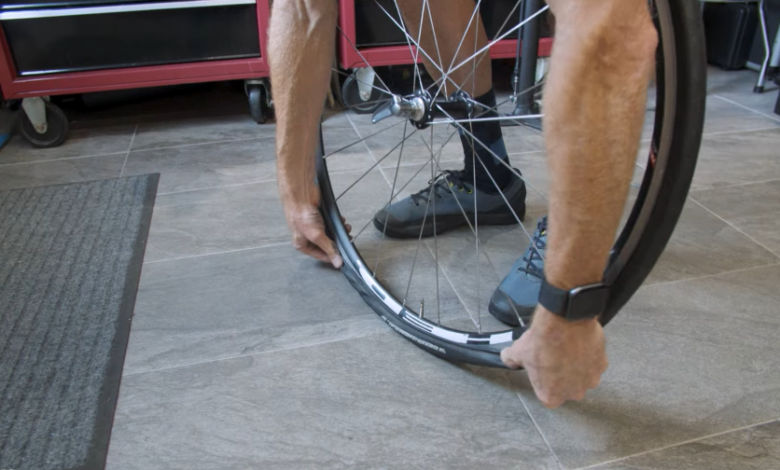Top 5 Bike Tyre Lever Mistakes and How to Avoid Them

Changing a bike tyre can be a frustrating task, especially if you’re not using the right tools or techniques.
One of the most commonly used tools for this job is the bike tyre lever, a small but essential device designed to help remove and replace tires from the wheel rim.
While tire levers make the job easier, many cyclists (from beginners to even more experienced riders) often make mistakes when using them. These mistakes can lead to damaged tires, bent rims, or unnecessary frustration.
1. Using Too Much Force
The Mistake:
One of the most common mistakes cyclists make when using tire levers is applying too much force.
This usually happens when the tyre is too tight on the rim and the lever is forced aggressively under the bead of the tire in an attempt to pry it off.
Excessive force can damage the tire lever, puncture the inner tube, or even bend the wheel rim.
How to Avoid It:
- Use multiple levers: Instead of relying on one lever to do all the work, use two or three levers. Insert the first lever under the tire bead, and while holding it in place, insert a second lever a few inches away. This distributes the tension across the tire and makes it easier to lift the bead without applying too much pressure.
- Use gentle motions: The key to successfully using tire levers is gentle, steady pressure. Avoid quick or jerky movements, which can lead to damaged components.
2. Improper Insertion of the Lever
The Mistake:
Another frequent mistake is inserting the tire lever incorrectly between the tire bead and the rim. If the lever is inserted too deeply, it may come into contact with the inner tube, potentially puncturing it.
Alternatively, inserting the lever at an incorrect angle can make the job harder than it needs to be, causing frustration or tool slippage.
How to Avoid It:
- Find the right spot: The best place to insert the tire lever is between the tire bead and the rim wall. Insert it at a shallow angle to avoid coming into contact with the inner tube. If you can see the inner tube, you’re too deep, and you need to back the lever out slightly.
- Work near the valve: Starting near the valve stem is a good way to avoid pinching the inner tube. Ensure the tire is fully deflated and the bead is pushed toward the center of the rim to give you more room to insert the lever.
3. Not Deflating the Tire Fully
The Mistake:
Trying to remove a tire that still has air in it can make the process unnecessarily difficult. If the tire isn’t fully deflated, it will remain tight against the rim, which makes it much harder to insert the tire lever and get the tire off.
How to Avoid It:
- Fully deflate the tire: Before attempting to use a tire lever, make sure all the air is out of the tire. Press the valve core down and hold it until no more air escapes. Once the tire is deflated, you should be able to pinch the tire sides together, creating more space between the tire bead and the rim, making the removal process easier.
- Release residual air: Sometimes a tire may seem deflated but still holds some residual air. Double-check that all air is released by pressing on the tire and pinching the sidewalls together. A fully deflated tire will be much easier to work with.
4. Starting at the Wrong Point on the Tire
The Mistake:
Starting the tyre removal process at the wrong point on the tire can make the job unnecessarily difficult.
Many people make the mistake of starting near the valve stem, where the tire is often seated more tightly. This increases the difficulty of removing the tire and puts additional strain on the tire levers.
How to Avoid It:
- Start opposite the valve stem: The area directly across from the valve stem is usually where the tyre bead is easiest to manipulate. Begin there and use the tire levers to work your way around the tire. This gives you more leverage and prevents damage to the valve area, which is more prone to being pinched or bent.
- Push the tire bead to the rim’s center: By pushing the tire’s bead into the center groove of the rim, you create more slack, making it easier to insert the tyre lever and remove the tire.
5. Pinching the Inner Tube During Reinstallation
The Mistake:
Once the flat tire is fixed, many cyclists struggle with the reinstallation process.
The most common mistake is accidentally pinching the inner tube between the tire bead and the rim during reinstallation. This leads to immediate flats or, worse, a blowout when you inflate the tire.
How to Avoid It:
- Inflate the tube slightly: Before reinstalling the tire, inflate the inner tube slightly so that it holds its shape. This helps prevent it from becoming trapped between the tire and rim during installation.
- Use your hands: Instead of using the tire levers to install the last part of the tire bead, try to use your hands. This reduces the risk of pinching the inner tube. If you must use a tire lever, do so very carefully and avoid digging too deeply under the tyre.
- Inspect before inflating: After placing the tire back onto the rim, run your hands along the sides of the tire to ensure that no part of the inner tube is pinched. Give the tire a visual inspection and, if necessary, deflate it slightly to adjust before fully inflating it.
Bonus Tip: Choose the Right Tire Levers
While mistakes with tyre levers often stem from improper technique, using low-quality or inappropriate levers for your bike can also be a problem.
Plastic tire levers are generally sufficient for most road bikes and hybrid bikes, but heavier-duty levers might be necessary for thicker, more rugged tires like those on mountain bikes.
How to Avoid It:
- Invest in quality tire levers: Choosing durable levers that are designed for your type of bike tire is crucial. Metal levers can be useful for tougher tires but be cautious with them as they can scratch or damage rims.
- Match the tool to the task: Know what your tire and rim require and choose the appropriate tire lever material and size for easy use without causing damage.
Conclusion
Using tyre levers may seem simple, but avoiding these common mistakes will save you time, frustration, and potential damage to your bike.
Whether you’re a beginner or an experienced cyclist, understanding the right way to use tire levers will make the process of fixing a flat tyre much smoother.
For more posts, Click here




